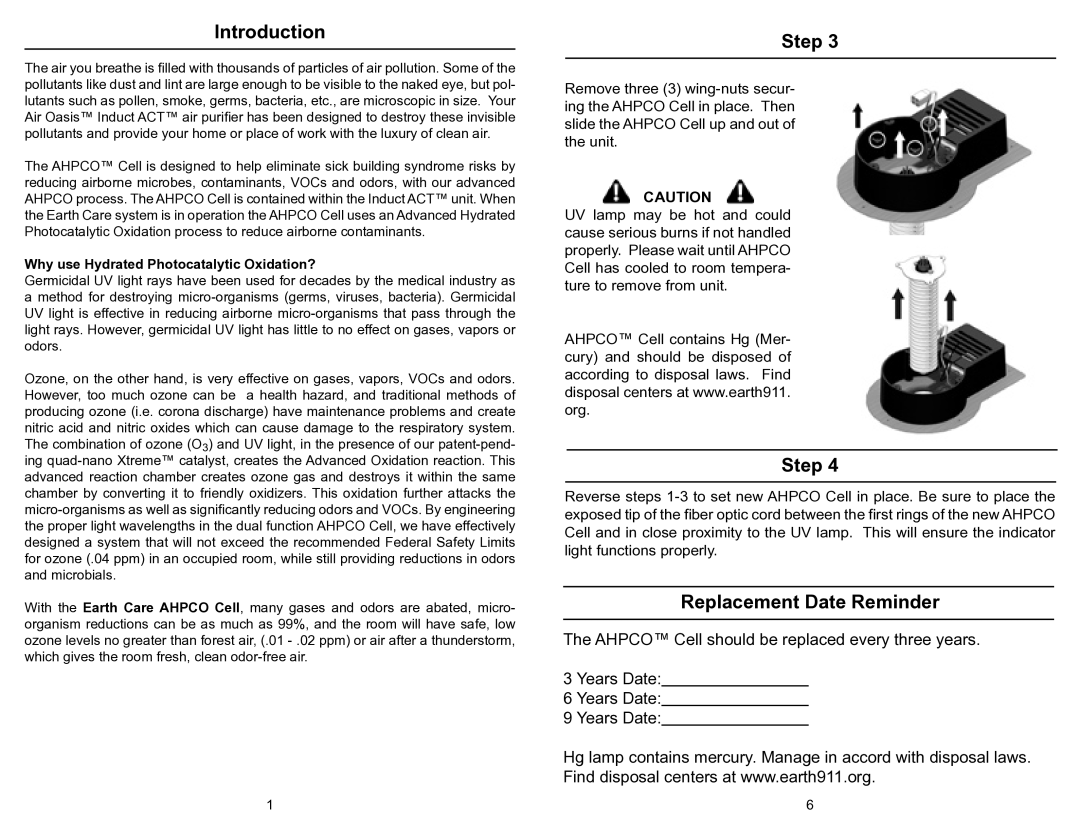9 specifications
Air Oasis 9 is an advanced air purification device designed to provide cleaner, healthier indoor air through innovative technologies and features. One of the standout capabilities of the Air Oasis 9 is its use of an exclusive patented technology called AHPCO (Advanced Hydrated Photocatalytic Oxidation), which effectively reduces airborne contaminants, including bacteria, viruses, mold, and allergens. This technology combines ultraviolet light with a catalyst to create ions that remove pollutants from the air, ensuring environments remain fresh and safe.The Air Oasis 9 is built with a compact design, making it suitable for various settings, including homes, offices, and commercial spaces. Its sleek and modern appearance seamlessly fits into any decor. The device operates quietly, ensuring it does not disturb daily activities or sleep, which is especially beneficial in bedrooms or other quiet environments.
One of the main features of the Air Oasis 9 is its three-stage filtration system. The first stage captures larger particles, such as dust and pet dander, while the second stage denatures hazardous microorganisms and breaks down odors. The final stage, the AHPCO technology, further purifies the air by targeting and neutralizing smaller pollutants. This multi-faceted approach to air purification ensures that users enjoy a comprehensive clean-air experience.
The Air Oasis 9 is energy-efficient, utilizing low power consumption while delivering high performance. It is also designed for user convenience, with an easy-to-use interface that allows users to monitor air quality and receive alerts when maintenance is needed. This emphasis on user-friendliness extends to filter replacements, which are straightforward and do not require professional assistance.
Another notable characteristic of the Air Oasis 9 is its ability to operate continuously without the need for extensive installation. Users can simply plug the device into any standard outlet and enjoy cleaner air almost immediately. Additionally, its portability facilitates easy movement between rooms, allowing users to customize air purification in various spaces as needed.
In summary, the Air Oasis 9 is a cutting-edge air purification system that combines advanced technologies, user-centric features, and energy efficiency. Its AHPCO technology, multi-stage filtration, and compact design make it an ideal choice for those seeking to improve the quality of indoor air while maintaining a stylish and unobtrusive presence in their space. With the Air Oasis 9, achieving cleaner, fresher air is both achievable and convenient.

